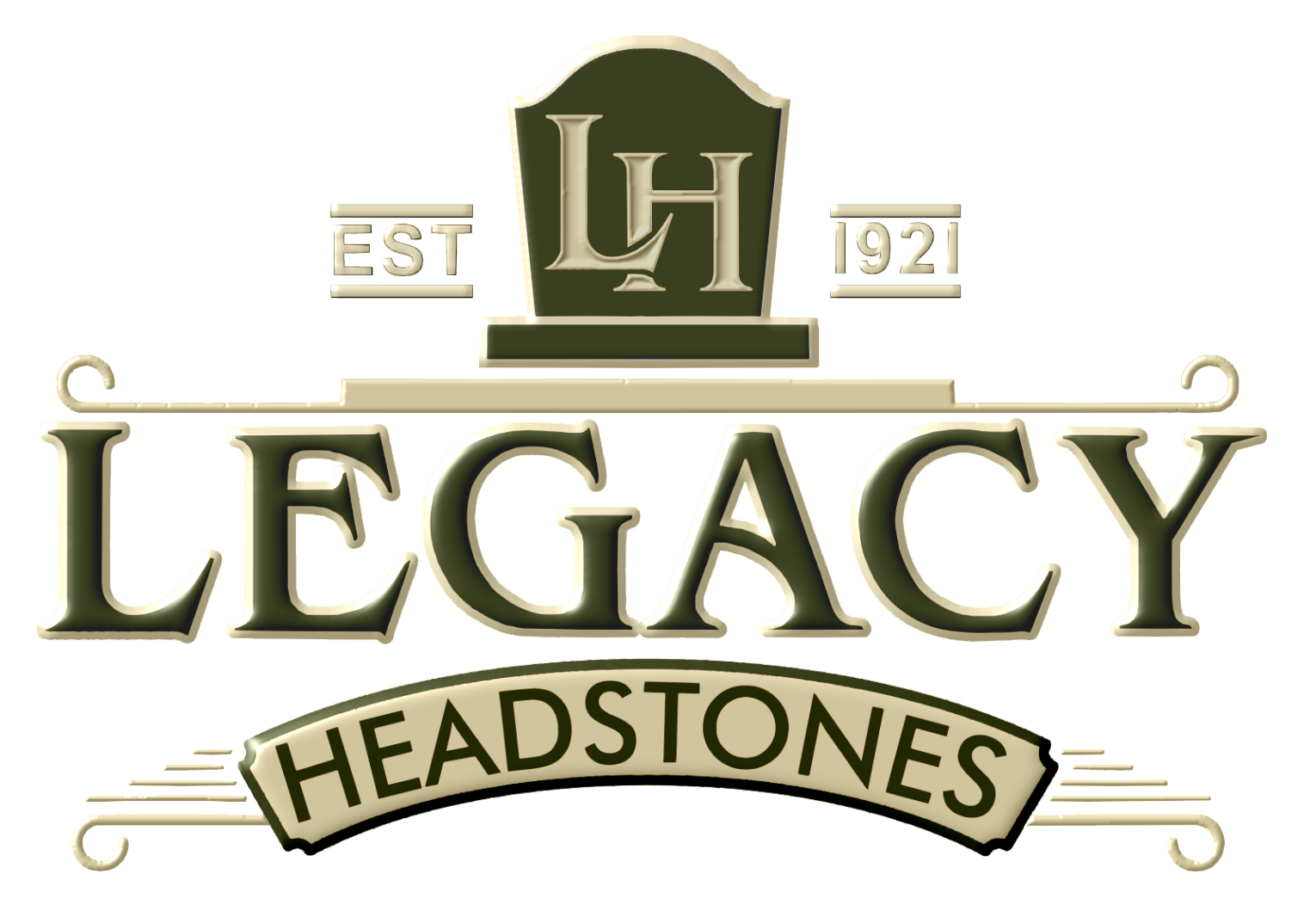If you are facing the difficult task of arranging the memorial of a loved one, the headstone manufacturing process may be of great interest to you. Legacy Headstones has been handcrafting headstones for almost a century. We employ expert customization and fabrication processes, but the manufacturing process varies per material and shape of the headstone being crafted. In this article, we take a close look at the process of manufacturing headstones to provide insight and professional guidance. With this information and our help, you will know what to ask and what to look for while purchasing a headstone for your loved one’s gravesite.
Historically, headstones used to be made of slate, marble, and other materials. By the mid-nineteenth century, manufacturers began using granite due to its abundance and durability. Granite is a kind of igneous rock that is primarily composed of feldspar, mica, and quartz. The natural shade of granite varies from white to pink and light gray to dark gray. Granite blocks are cut directly from the bedrock by drilling, jet-piercing, or water jet-piercing. Once the granite is removed from the quarry bed, workers drill horizontally into the block and place paper-wrapped blasting charges to make a clean break. Those workers then transport the block to the headstone maker.
Using a rotary diamond saw with a solid steel diamond blade, the headstone maker then cuts the block into smaller granite slabs that measure between six inches to one foot thick. They then pass each slab through a varying number of rotating heads with differing levels of grit arranged from the most abrasive to the least. Each pad features water and aluminum or tin oxide powder to polish the granite stone to a smooth, glossy finish.
Once smoothed, the granite is cut into the appropriate shape by hand or with a multi-blade diamond saw. Once cut into shape, the granite is then polished again. Some headstone makers will chisel the outer edges of the stone by hand to provide a more defined shape. They then apply a rubber stencil of the design over glue and cover it with a carbon-backed layout of the design. The carbon transfers the design onto the rubber stencil, so they can sandblast or carve the design into the stone. Once the design is complete, they spray the stone with high-pressure steam to remove any residual debris. They polish it one more time and then package it in cellophane or heavy paper to protect the finish in transit.
The manufacturing process of bronze headstones is not that much different because most bronze headstones sold today consist of bronze plates that are attached to granite pieces. Bronze is not a naturally occurring element. In fact, it is comprised of copper, lead, tin, and zinc. With a large pot that is heated to more than 2,000 degrees, workers melt the bronze down into a shape that can be molded into the eventual headstone plate. The liquid bronze is then poured into a custom mold that is made from wax. Once the bronze is removed from the mold, it is left to cool and harden.
Next, they begin what is known as the chasing phase. Artists use special tools to smooth over any blemishes that occurred during the molding process. Once chasing is complete, they drill holes into the granite so that the bronze plate can be easily attached. Many manufacturers have automated this process by using machines. Once the plate is attached, the bronze headstone is complete and ready to ship to the customer, cemetery, or funeral director. We hope that this article provides a lot of insight into the process of manufacturing of headstones. If you have any questions or would like to learn more about our headstone selection, please contact us today to learn more.

